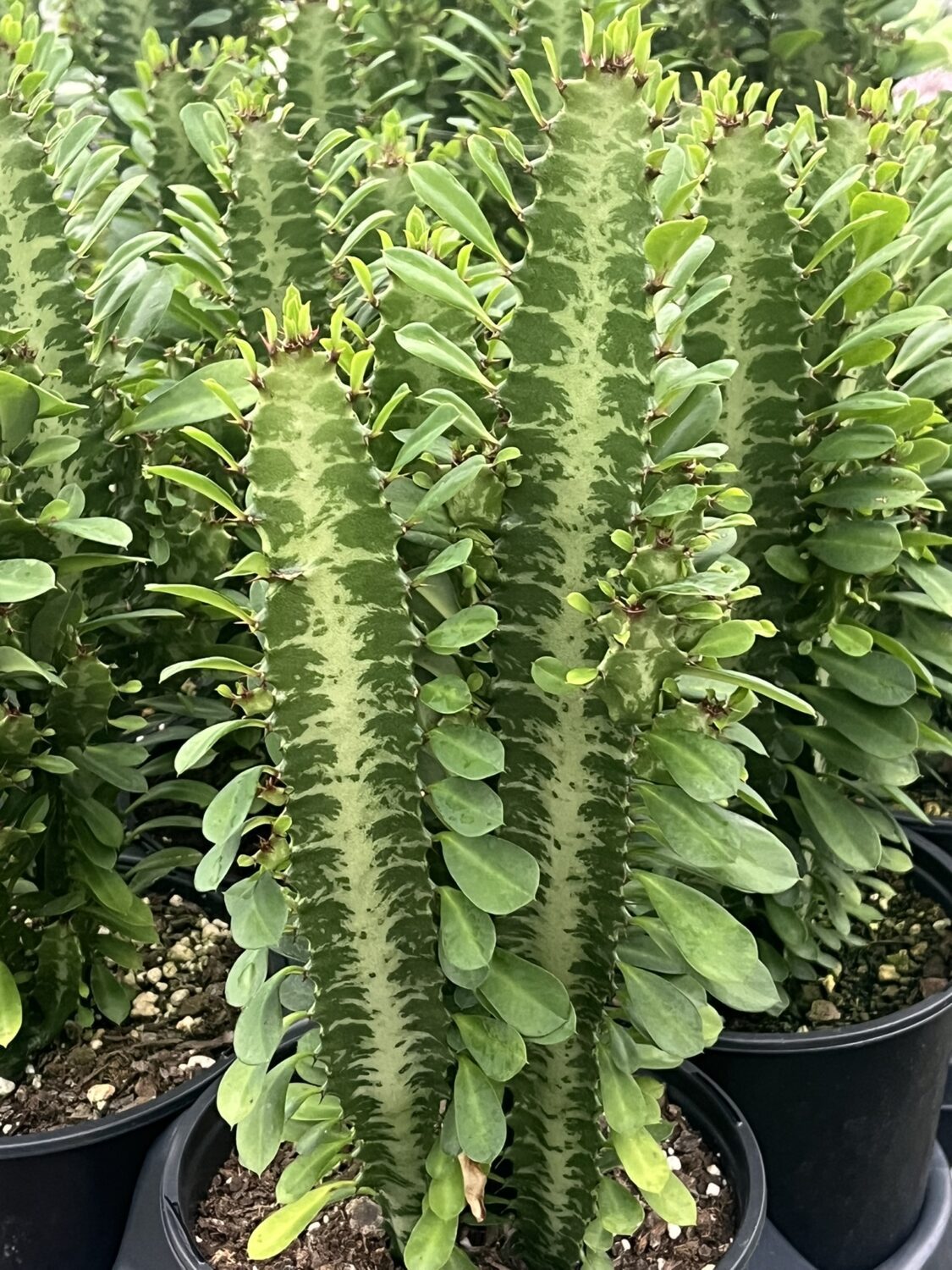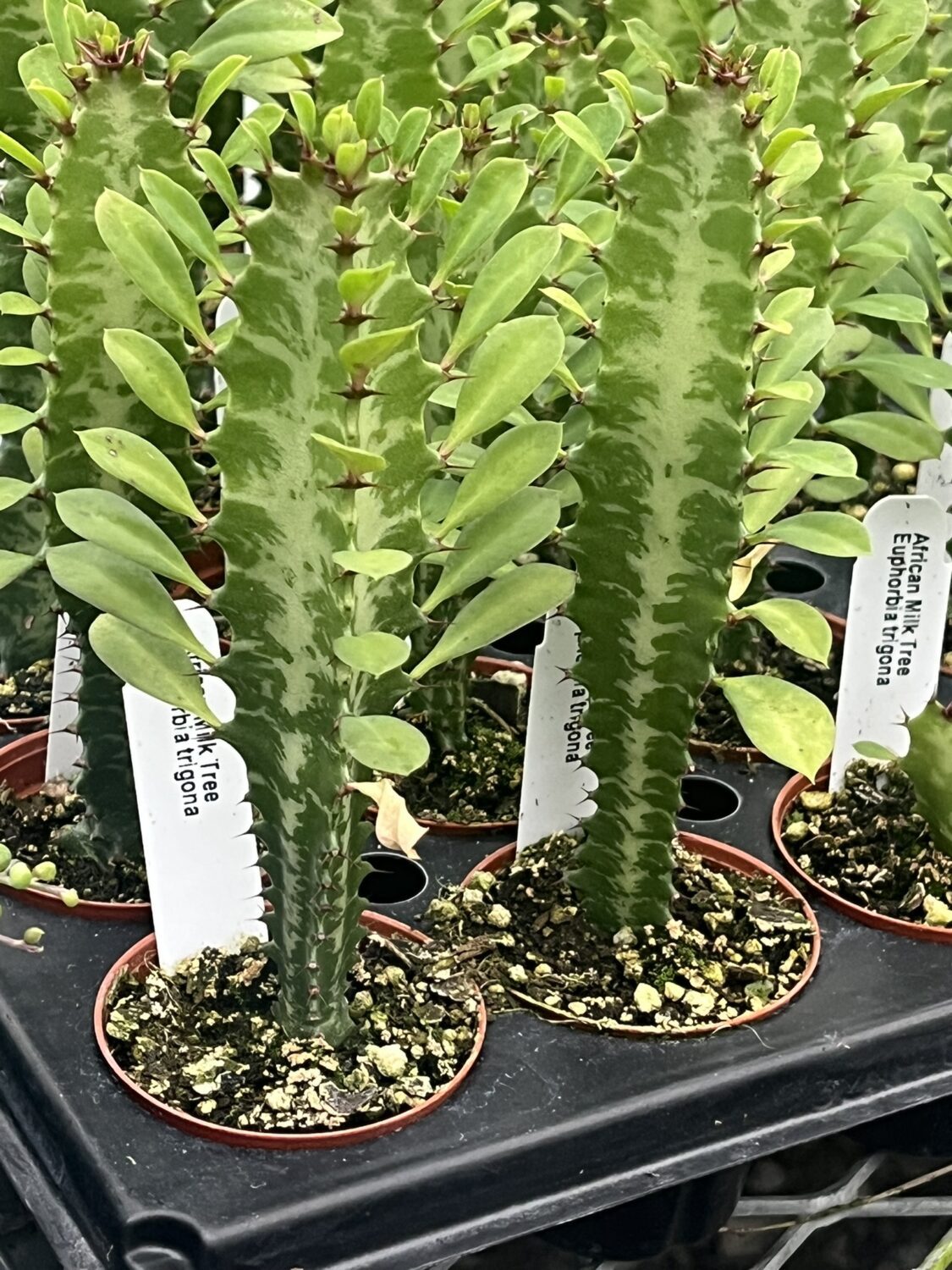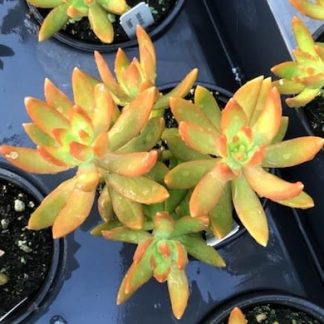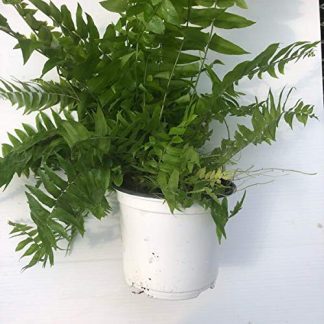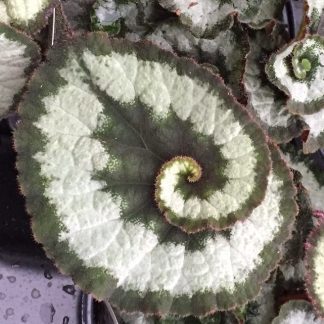Description
Euphorbia trigona ‘African Milk Tree’: A Complete, Easy-to-Follow Guide to Growing and Loving This Unique Succulent
If you’re looking for a plant that feels bold, artistic, and surprisingly simple to care for, meet Euphorbia trigona. Often called the African Milk Tree, this striking succulent has a tall, sculptural look and a playful charm that fits almost anywhere. Its upright shape, tiny leaves, and geometric ridges make it feel like a living piece of modern art.
And the best part?
It’s easy. Really easy. Whether you want a centerpiece for your living room, a statement for your patio, or a plant that thrives with little attention, this one checks all the boxes.
Let’s explore everything you need to know about growing, caring for, and enjoying this one-of-a-kind succulent.
Where Does Euphorbia trigona Come From?
Despite the name “African Milk Tree,” this plant isn’t truly a tree and has nothing to do with milk. It’s a fast-growing succulent shrub native to Central Africa. In its natural habitat, it soaks up strong sunlight and thrives in dry, sandy soil.
Outdoors, it can reach up to 8 feet tall. Indoors, it stays smaller but still stands tall and dramatic, often becoming a favorite plant in any collection.
The stems are triangular, with three ridges lined by small teardrop-shaped leaves and short spines. The effect is clean, striking, and just a little wild.
There’s also a red variety called ‘Rubra’ or ‘Royal Red’ that develops gorgeous burgundy tones, especially in bright light. It’s like adding velvet and drama to your space.
Why People Love the African Milk Tree
This succulent isn’t just pretty—it’s practical and surprisingly rewarding. Here’s why plant lovers adore it:
-
Striking shape – Adds instant height and architecture to any room.
-
Easy care – Perfect for beginners or busy plant parents.
-
Low maintenance – Thrives with minimal fuss.
-
Air friendly – Like many succulents, it can help freshen your space.
-
Long-lived – With basic care, it can be part of your home for decades.
Best of all, it’s a true conversation piece. Guests will always ask about it.
How to Grow Euphorbia trigona: Step-by-Step
1. Pick the Perfect Spot
Light is everything. Euphorbia trigona loves bright, indirect light.
-
Indoors: A sunny south- or east-facing window is ideal.
-
Outdoors: Full sun to partial shade works well. In very hot climates, offer some afternoon shade to prevent sunburn.
Avoid dark corners. This plant won’t thrive without strong light.
2. Choose the Right Soil
This succulent hates wet roots. Well-draining soil is a must.
DIY succulent soil mix:
-
2 parts cactus or succulent potting mix
-
1 part sand
-
1 part perlite or pumice
This keeps the roots dry and happy.
3. Plant It Properly
You can plant in a pot or directly in the ground (in warm climates).
-
Always use a pot with drainage holes.
-
Place the plant so the base sits just above the soil line.
-
Avoid burying it too deep.
-
Gently loosen the roots, set it in place, and press the soil lightly to secure.
4. Water the Right Way
Watering is where most people go wrong. Follow this simple rule: dry soil before water.
-
Check first: Let the soil dry completely before watering again.
-
Deep soak: Water thoroughly, then let excess drain out.
-
Winter rest: Water sparingly during cooler months when the plant slows down.
Warning signs: Yellow, mushy stems mean overwatering. If this happens, stop watering and let the plant dry out.
5. Keep It Warm
Euphorbia trigona loves warmth. Aim for 65–75°F (18–24°C).
-
Protect from frost—bring indoors if temperatures drop below 50°F (10°C).
-
Keep away from drafty windows or cold doors.
-
Humidity isn’t a concern; it does fine in dry indoor air.
6. Feed for Growth
During spring and summer, give it a little boost:
-
Use a balanced, water-soluble fertilizer.
-
Dilute to half strength.
-
Feed once a month.
Skip feeding in fall and winter.
7. Prune When Needed
This plant can grow tall and branch out over time. Pruning keeps it neat and encourages new growth.
How to prune:
-
Wear gloves—its sap can irritate skin.
-
Use clean, sharp scissors or shears.
-
Cut just above a ridge.
-
Let cut surfaces dry before watering again.
How to Propagate Euphorbia trigona
Want more plants? Propagation is simple.
Step-by-step:
-
Cut a healthy stem with sterile scissors.
-
Let it dry for 2–3 days to form a callous.
-
Plant in well-draining soil.
-
Mist lightly until roots form.
-
Keep in bright, indirect light.
In a few weeks, you’ll have a new baby Milk Tree.
Common Problems and Fixes
This plant is hardy, but here are a few things to watch for:
-
Mealybugs or spider mites: Look for white fuzz or tiny webs. Treat with neem oil or insecticidal soap.
-
Root rot: Usually from overwatering. Repot in dry soil and adjust your watering schedule.
-
Sunburn: Brown patches on stems mean too much sun—move to a shadier spot.
Catch problems early, and they’re easy to fix.
Styling and Display Ideas
The African Milk Tree adds instant structure and style to your space.
-
Indoors: Perfect for living rooms, home offices, or entryways.
-
Containers: Pair with trailing succulents or decorative stones for contrast.
-
Outdoors: Ideal for desert gardens with cacti and low-water plants.
It works beautifully as a single statement plant or in mixed groupings.
Safety Note
The sap of Euphorbia trigona is mildly toxic and can irritate skin or eyes.
-
Wear gloves when pruning or propagating.
-
Keep out of reach of pets and children.
-
Wash skin immediately if sap contacts it.
A little care ensures safe enjoyment.
The Joy of Growing Euphorbia trigona
Growing the African Milk Tree is like watching a living sculpture slowly rise over the years. It’s bold but forgiving, elegant but rugged, and it rewards even minimal care with dramatic beauty.
All it really asks for is sunlight, dry soil, and a bit of warmth. In return, it offers decades of life and presence—a true plant companion.
If you want a succulent that feels timeless yet fresh, this one might be your perfect match. Bring one home, give it a bright spot, and watch it thrive.
Ready to welcome one into your home?
The African Milk Tree won’t just grow in your space. It’ll grow on you.

